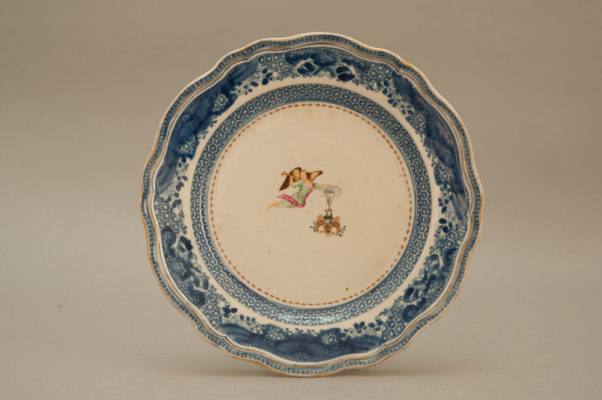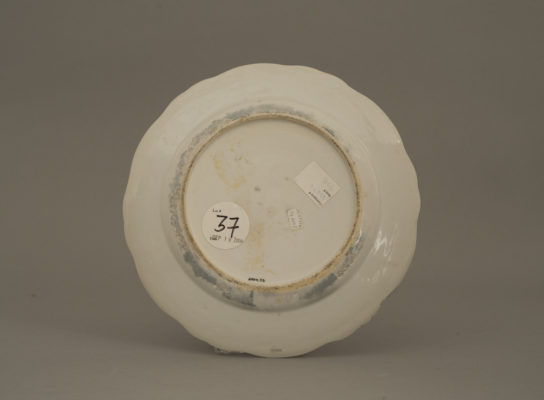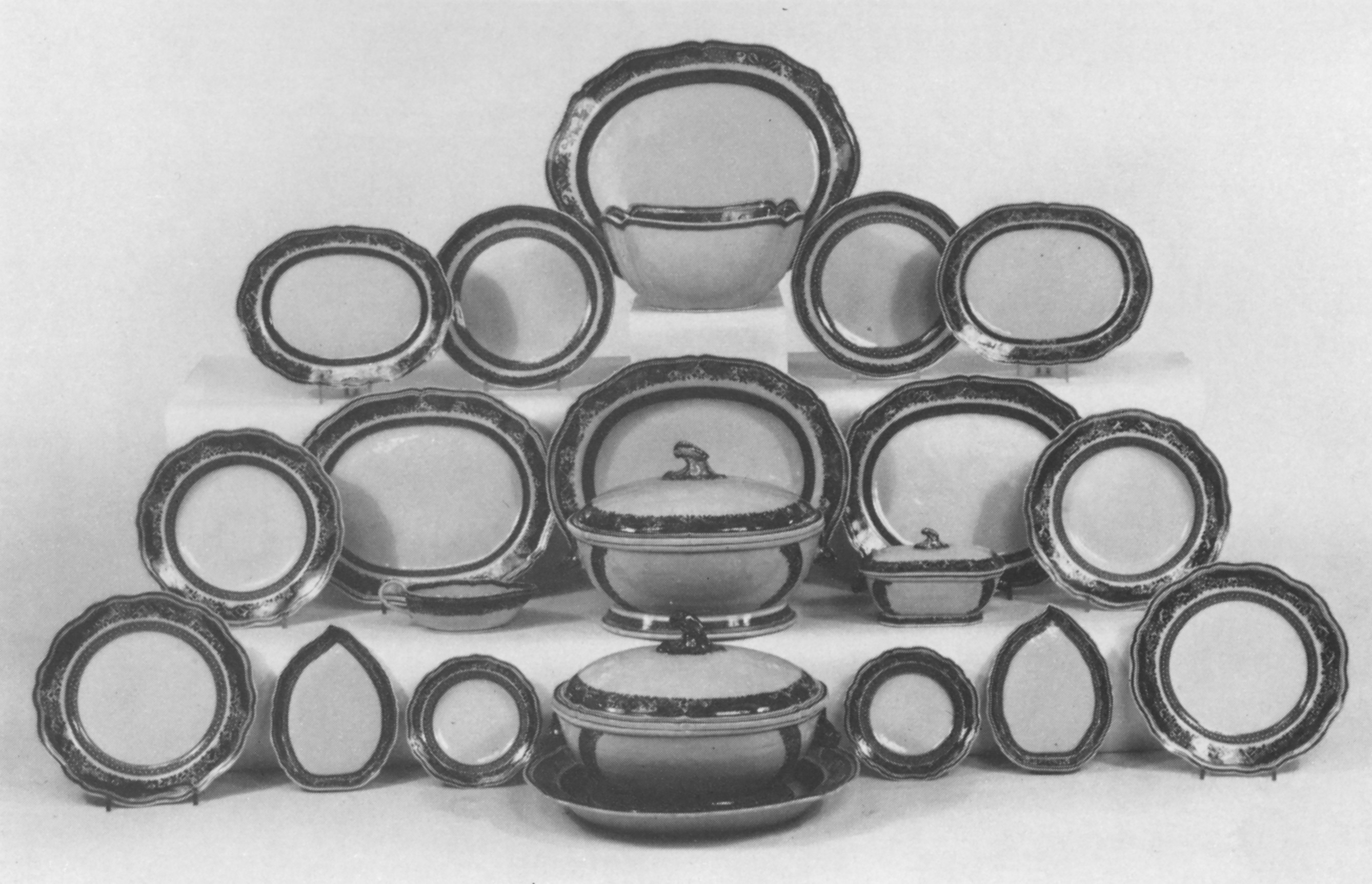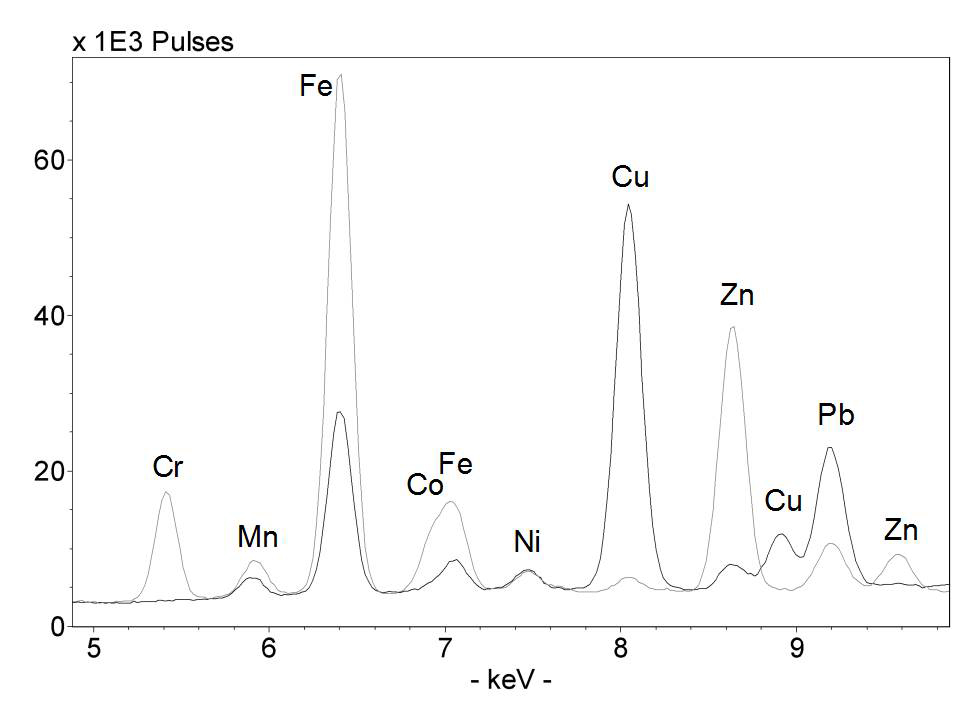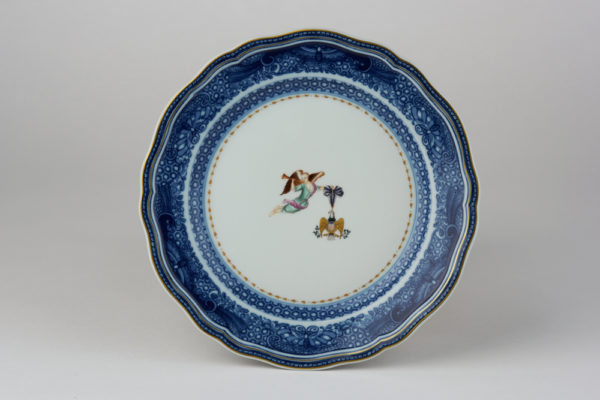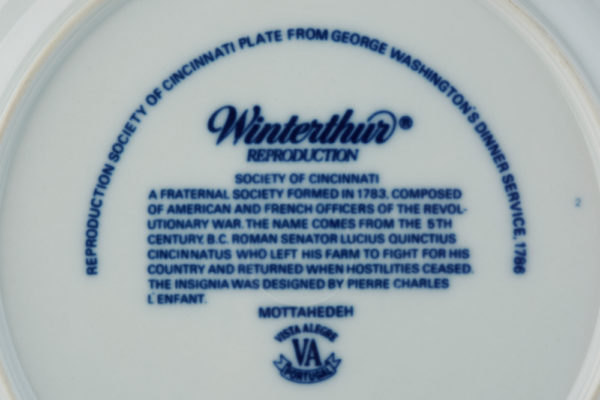Owned by George Washington?
The Society of the Cincinnati was formed in 1783 to perpetuate the friendships made by officers during the American Revolution. George Washington was the first president of the society, and he purchased a set of 302 pieces of Chinese export porcelain decorated with a figure of Fame holding the badge of the Society of the Cincinnati. He used the service in New York, Philadelphia, and at Mount Vernon. Today many curators and collectors consider this to be the most significant group of antique porcelain in existence. Genuine examples from the service occasionally appear on the market and fetch high prices. Experts, however, have questioned the authenticity of some.
Provenance
The original service was purchased by George Washington in 1786. After his death, it passed to his wife, Martha, who bequeathed it to her grandson, George Washington Parke Custis. From there it descended to Custis’s daughter Mary Anna Randolph Custis and her husband, Robert E. Lee. Confiscated by the U.S. government during the Civil War, the service was returned to the family in 1901. During the 20th century, the service was dispersed. Winterthur holds the largest number of pieces (74); others are owned by various museums and private collectors.
Connoisseurship
The ceramic body of these two pieces appears to be similar, as do the underglaze blue Fitzhugh borders. Close examination, however, shows visual differences in the quality of painting of the central figures. Research has determined that a Chinese export service with a blue Fitzhugh border, but no central decoration, was sold at auction in London in 1975. The presence of a gray staining on the reverse of the plate on the bottom right is possible evidence that a genuine 18th-century plate was refired to fix new enamel decoration to an antique plate.
These two plates appear to belong to the service of Chinese export porcelain once owned by George Washington. The example on the top is genuine; the plate on the bottom is genuine late 18th-century Chinese export porcelain, but the figure of Fame holding the badge of the Society of the Cincinnati was added in the 20th century to increase its value.
CEP Service
This service of Chinese export porcelain with an underglaze blue Fitzhugh border embellished with gold was sold at Christie, Manson and Woods auction of Fine Chinese Export Ceramics, Enamels, and Works of Art in London, June 23, 1975. It has been suggested that the figure of Fame holding the badge of the Society of the Cincinnati was added to these genuine porcelains to increase their value.
Chinese export blue and white dinner service sold by Christie’s London, 23 June 1975
© Christie’s
Scientific Analysis
Nondestructive X-ray fluorescence analysis (XRF) showed that the clay bodies of both plates were similar. The green enamel on the plate on the right was found to contain chromium, which is not known to have been used in China until the early 20th century. The use of a zinc flux in the green enamel and a high concentration of cobalt were also found. These are also inconsistent with 18th-century Chinese technology.
These two spectra show differences in the composition of the green enamel on the dress worn by the figure of Fame. The genuine example is colored with copper while the decoration added in the late 20th century is colored with chromium. Other materials not found in genuine 18th- century Chinese enamel decoration were also detected, but chromium green is the most damning.
Posted with permission from Uffelman, E.S.; Fuchs, R.W. II; Hobbs, P.A.; Sturdy, L.F.; Bowman, D.S.; Barisas, D.A.G. In Collaborative Endeavors in the Chemical Analysis of Art and Cultural Heritage Materials; Lang. P.L.; Armitage, R.A. Eds.; ACS Symposium Series 1103; American Chemical Society; Washington, D.C., 2012; pp 251-83.
© 2012 American Chemical Society.
Verdict
Scientific analysis confirms that experts were correct in questioning some examples of this service that came on the market in the late 20th century. One of the plates is clearly genuine, late 18th-century Chinese export porcelain, but the figure of Fame holding the badge of the Society of the Cincinnati was added in the 20th century to increase its value. The other example is has authentic decoration and was once owned and used by George Washington.
Reproduction Plate
Like many museums, Winterthur contracts with various companies to create licensed reproductions of objects in our collection. Although licensed museum reproductions are always clearly marked, they have sometimes been mistaken for the real thing. This plate was approved for inclusion in Winterthur’s Licensed Products Program in 1984.
If you look closely, you can see that the color of the clay body and the glaze is different from the original. The reproduction is glossy while the original has a more imperfect surface. There is also no wear on the reproduction.
This back of the reproduction plate is clearly marked. It would extremely difficult, although not impossible, to grind away the mark.
Bibliography
Archie, Ellen, Ronald W. Fuchs II, Jennifer Mass, and Erich Uffleman. “The Most Dangerous Imitations: A Group of Spurious Chinese Export Porcelain Decorated with Fame and the American Eagle.” Ceramics in America (2016).
Mueller, Shirley M., and Jennifer L. Mass. “Using Science to Unmask Fake Order of the Cincinnati Decoration on Chinese Export Porcelain.” The Magazine Antiques 178, no. 4 (July 2011): 82−84.
Uffelman, Erich, Ronald W. Fuchs II, Patricia A. Hobbs, Lauren F. Sturdy, Danielle S. Bowman, and Derek A. G. Barisas. “Technical Examination of Cultural Heritage Objects Associated with George Washington.” In Collaborative Endeavors in the Chemical Analysis of Art and Cultural Heritage Materials, edited by Patricia L. Lang and Ruth Ann Armitage, 251−83. Washington, D.C.: American Chemical Society, 2012.


